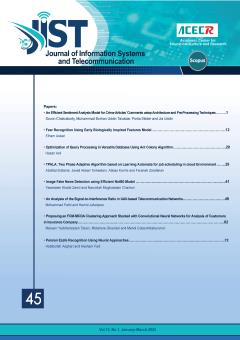Deep Learning (DL) is the most widely used image-analysis process, especially in medical image processing. Though DL has entered image processing to solve Machine Learning (ML) problems, identifying the most suitable model based on evaluation of the epochs is still an o
More
Deep Learning (DL) is the most widely used image-analysis process, especially in medical image processing. Though DL has entered image processing to solve Machine Learning (ML) problems, identifying the most suitable model based on evaluation of the epochs is still an open question for scholars in the field. There are so many types of function approximators like Decision Tree, Gaussian Processes and Deep Learning, used in multi-layered Neural Networks (NNs), which should be evaluated to determine their effectiveness. Therefore, this study aimed to assess an approach based on DL techniques for modern medical imaging methods according to Magnetic Resonance Imaging (MRI) segmentation. To do so, an experiment with a random sampling approach was conducted. One hundred patient cases were used in this study for training, validation, and testing. The method used in this study was based on full automatic processing of segmentation and disease classification based on MRI images. U-Net structure was used for the segmentation process, with the use of cardiac Right Ventricular Cavity (RVC), Left Ventricular Cavity (LVC), Left Ventricular Myocardium (LVM), and information extracted from the segmentation step. With train and using random forest classifier, and Multilayer Perceptron (MLP), the task of predicting the pathologic target class was conducted. Segmentation extracted information was in the form of comprehensive features handcrafted to reflect demonstrative clinical strategies. Our study suggests 92% test accuracy for cardiac MRI image segmentation and classification. As for the MLP ensemble, and for the random forest, test accuracy was equal to 91% and 90%, respectively. This study has implications for scholars in the field of medical image processing.
Manuscript profile


